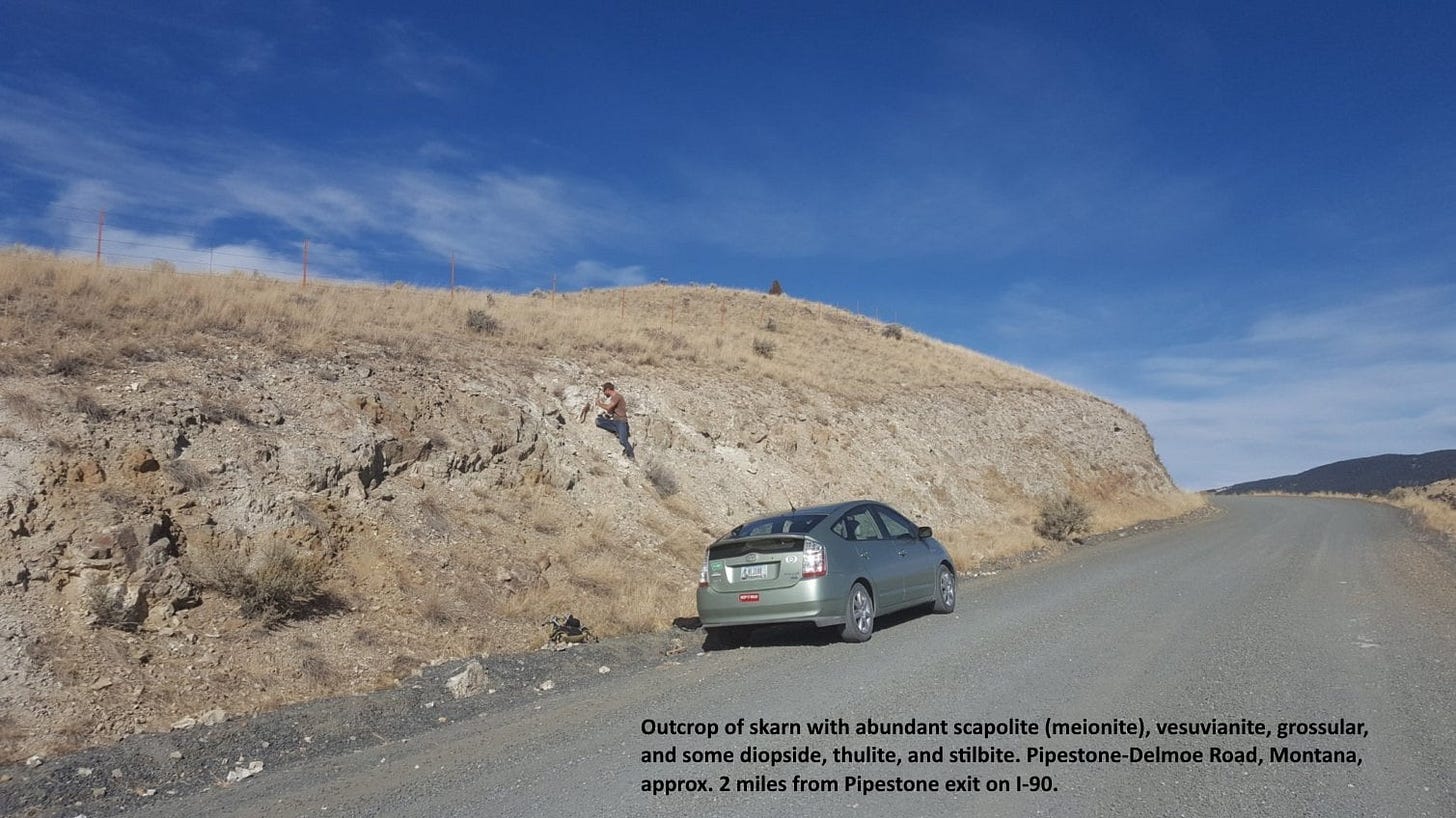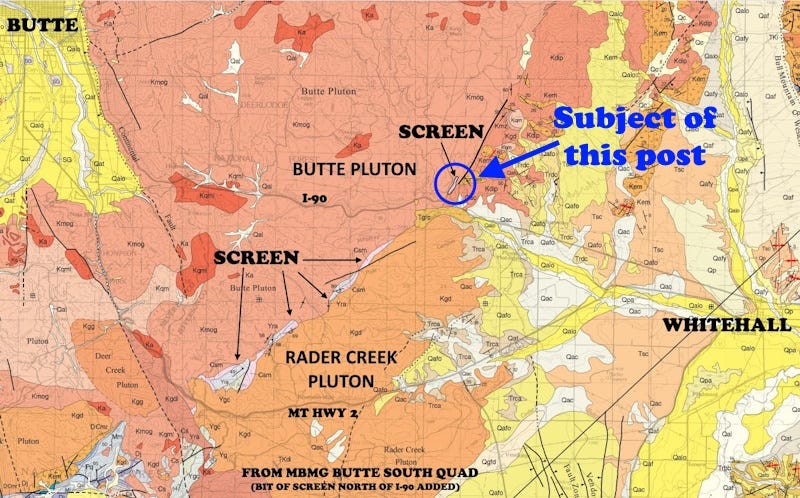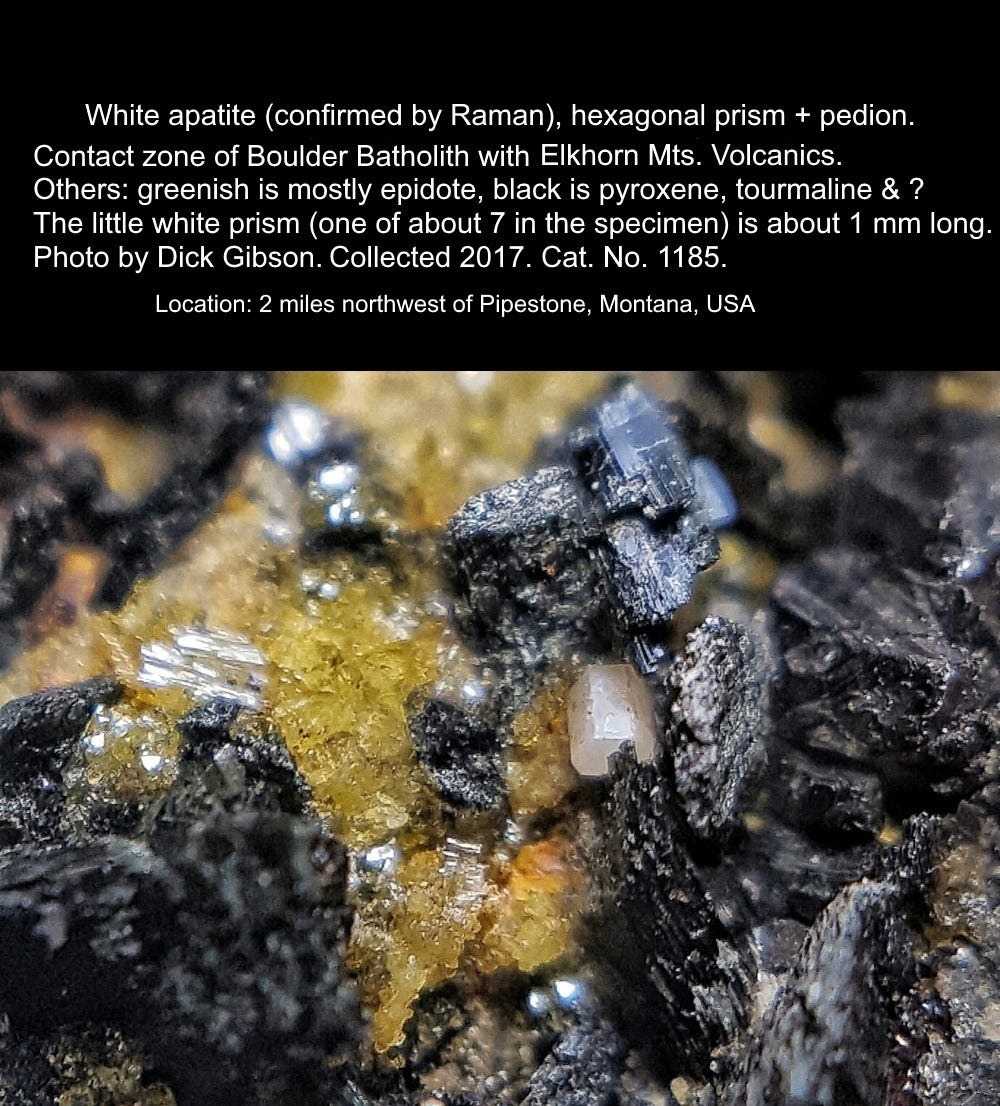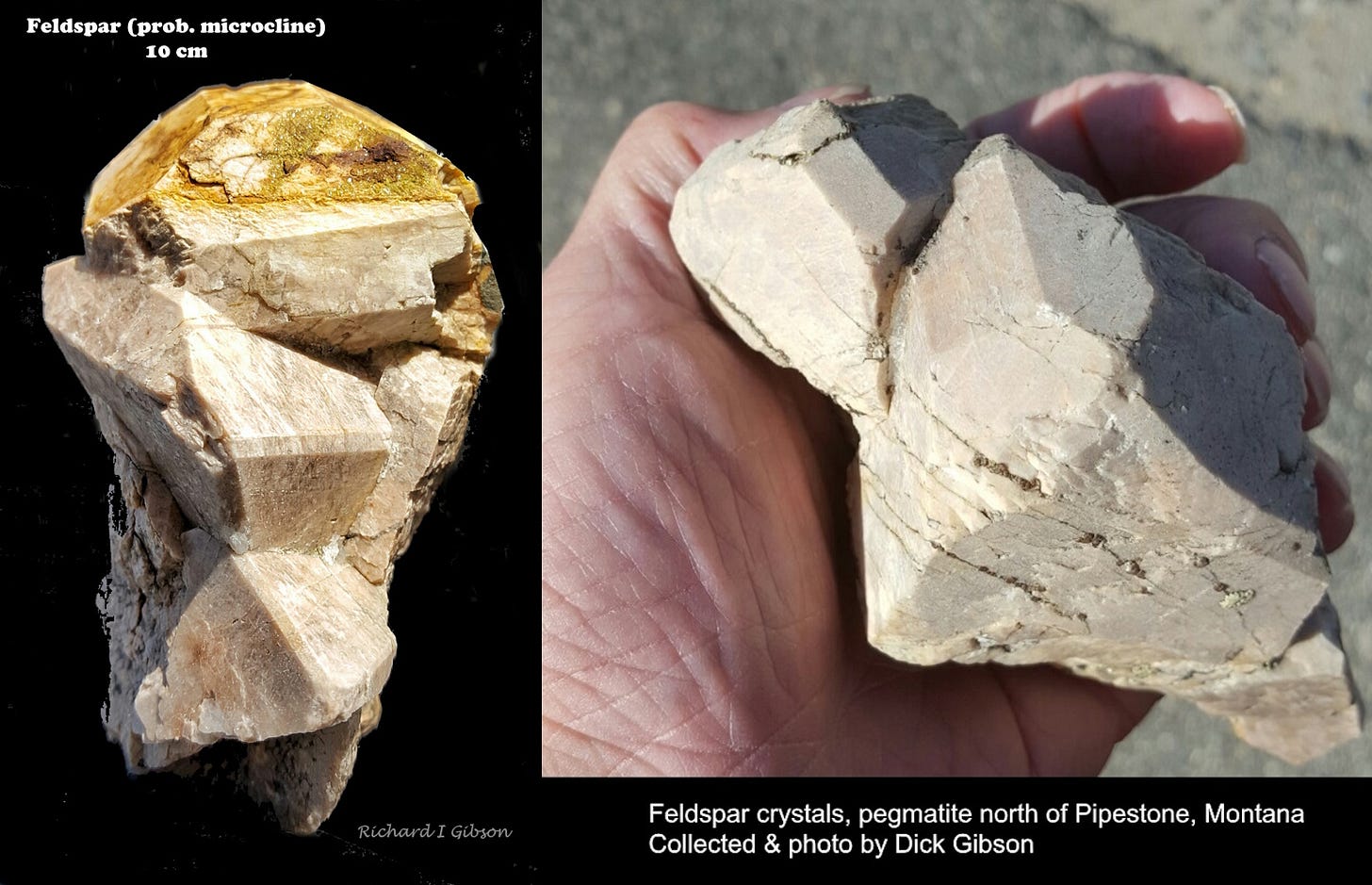Life in the USA is not normal. These posts have been scheduled for over a month, and they will continue, as a statement of resistance. I hope you continue to enjoy and learn from them.
Calc-silicates are silicate minerals that typically have calcium as one of their major cations. The list includes andradite garnet, calcic plagioclase, clinozoisite and zoisite, diopside, epidote, grossular garnet, hedenbergite, meionite (calcium scapolite), prehnite, titanite, vesuvianite, and wollastonite. Those minerals are all calcium silicates, but their distinction comes from diverse amounts of other common elements such as aluminum, magnesium, iron, and a few others.
One of the most common places such minerals crystallize is in skarns, the contact metamorphic zones along the margins of igneous bodies where metasomatism takes place. Metasomatism is from words meaning “changed body,” and it happens through exchange of chemicals between the igneous rock and the country rock it intrudes, as compared to metamorphism, “changed form,” because of heat and pressure without significant chemical exchange. In practice the country rock could be lots of things, but if it is limestone or dolomite, calcium carbonate or calcium-magnesium carbonate, there’s a huge source for the calcium needed to make those minerals. Add calcium, cook until done; let cool several million years before serving.
The Boulder Batholith is composed of about 16 discrete bodies of granitic rock, each with slightly different chemistry and age. Think of it like 16 blobs in a lava lamp that came together to solidify while maintaining (more or less) their own integrity. The largest blob (more technically, a pluton, from “Pluto,” Roman god of the underworld, used for rocks and bodies of rock that form at depth in the earth) is the Butte Granite. Along part of its southeastern margin, the Butte Granite is in contact with the Rader Creek Pluton, which is a little older and slightly different in composition.
The zone where the Butte and Rader Creek Plutons come together is not just a direct contact between the two granitic rocks. Between them is a zone, called “The Screen,” where formerly sedimentary and volcanic rocks became trapped between the two igneous bodies, or along their contact zones.
Two (of several) distinct skarn zones in the Screen reflect the diverse chemistry of the country rocks. Along the Delmoe-Pipestone Road, just south of its crossing of the old railroad tracks, the skarn is mostly metasomatized calcic rocks, probably Cambrian carbonates. When you drive past the outcrop there, it’s just a bland light-colored section that one might think was limestone, but it’s almost all scapolite, specifically the calcium end member of the series, meionite (calcium-aluminum silicate carbonate). The white meionite fluoresces a deep magenta, and nicely formed crystals can sometimes be found. The crystals in the photo above were discussed along with some of the other minerals here, in this previous post.
Dark patches in the outcrop are brown vesuvianite (calcium-aluminum-magnesium-iron silicate) and similar appearing grossular garnet (calcium aluminosilicate). The vesuvianite is pretty fractured and it is brittle, so although it is evident that there are big (2-inch-plus) crystals, they’re hard to get out intact. The greenish mineral there is mostly diopside, calcium-magnesium silicate. If you look carefully you can find pink patches of thulite, manganese-bearing zoisite. It might be clinothulite / clinozoisite, chemically the same calcium-aluminum-silicate as zoisite, but with a different crystallographic form. There are also many areas containing small rosettes of beige to white stilbite, a zeolite, yet another calcium-aluminum silicate.
A half mile further north, along the railroad bed, the skarn is in the contact zone between the Butte Pluton and the adjacent Elkhorn Mountains Volcanics. Because there was much more iron and magnesium in the volcanics, the skarn minerals are dominated by green epidote (calcium-aluminum-iron silicate) and tourmaline (probably mostly black schorl, sodium-iron-aluminum borosilicate, or maybe uvite, calcium-magnesium-aluminum borosilicate, but most of the tourmaline from the Boulder Batholith is labeled schorl). The boron, probably coming out of the granitic Butte Pluton, has also made quite a lot of lavender axinite, calcium-magnesium and calcium-iron aluminum borosilicate, and there may possibly be some tiny orange crystals of tinzenite, which is the manganese-bearing variety of axinite. Axinite probably forms at the expense of sodium-based schorl in boron- and calcium-rich settings. In this part of the skarn you can also find some tiny crystals of titanite (calcium-titanium silicate) and apatite, calcium phosphate.
The key thing all those minerals have in common is calcium making the calc-silicates. Even in the skarn in the volcanics some of the calcium may have come from the narrow zone of Cambrian limestone and dolomite that occupied this contact between the Butte and Rader Creek Plutons.
The ultimate origin of the Screen is another question, which I’ll leave for another day. This post is just to point out the mineral diversity along it. Thanks to Chris Gammons for analyses of some of these minerals (meionite, stilbite, and apatite).
For more information, see Gibson, 2018, Geology and Mineralogy of the Southeastern Margin of the Butte Pluton near Pipestone, Montana: Proceedings, Montana Mining & Mineral Symposium 2017, MBMG Open-File Report 699.
















Skarn = igneous intrusion + limestone or is that oversimplified? Haven't come across in UK where our igneous is mostly from Caledonian Orogeny and limestone is younger. But I think I met some on Isle of Skye.
Another fine and interesting post, and right up my alley in terms of parts of Montana in which I have an interest. I wonder what your take is on relative abundance of skarn in and around the Boulder Batholith vs skarn occurrences elsewhere in North America and other parts of the world where your work has taken you?